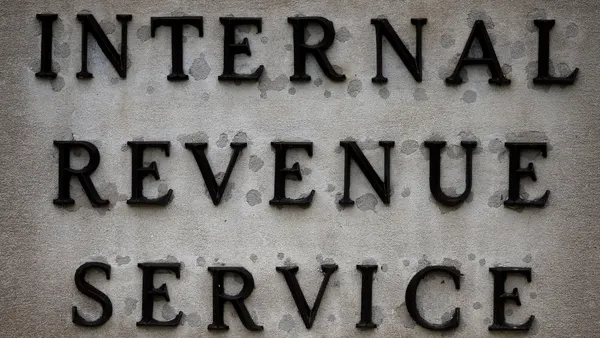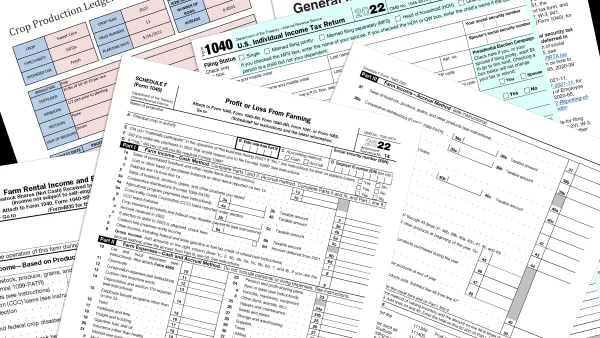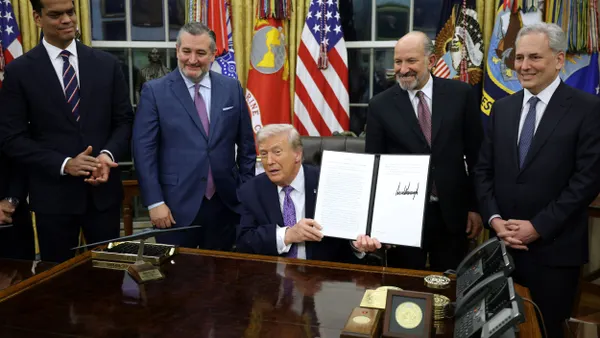Dive Brief:
- Digital payments company Stripe is expanding its Stripe Tax solution — an existing offering which automatically calculates a range of taxes — to enable platforms on its Connect service to bring the tax solutions to their customers, according to a Wednesday press release.
- The move will enable platforms such as Squarespace and Woo Commerce to offer a “no-code solution” for their customers, according to the release from Stripe, which is dual-headquartered in Dublin, Ireland and San Francisco, California.
- The tool will make it easier for businesses to make cross-border sales or expand internationally, as tax compliance has been a sticking point for businesses juggling multiple different sales or value-added tax regulations when looking to move into new markets, Vivek Sharma, head of revenue and finance automation for Stripe told CFO Dive. This can provide key benefits for companies, as especially with modern e-commerce, “there are so many nuances to tax that no one human being can keep up with,” Sharma said.
Dive Insight:
The complexity of tax compliance is weighing on CFOs’ minds. More than half (59%) of finance leaders surveyed by Stripe agreed that business tax requirements are getting more complicated, with the “main bottleneck” they are struggling with being “the human capacity to monitor and adjust for changing compliance,” Sharma said.
“That's a huge number of CFOs that are just consciously nervous about these things,” he said.
In the U.S. alone, there have been hundreds of changes to sales tax law this year: a July report by tax technology solutions provider Vertex found there were 431 new sales tax and tax rate changes at the state, county and district levels thus far in 2023, a 41% bump from 2022.
Complying with these changes only gets more complicated when adding in other taxes such as Europe’s value-added tax, especially for smaller businesses, which are in “deep, deep trouble if they want to expand and grow because they just can't keep up with the number of changes around the world,” Sharma said.
“One of the things that we've discovered as we've talked to more and more users and customers is that while they can get tax directly from us, many of these folks that work with these platforms have a lot of gaps, especially as they're trying to grow their business,” Sharma said.
Expanding internationally is a particular pain point for such businesses: 18% of users surveyed by Stripe said they were not moving to other markets due to tax worries, Sharma said.
For CFOs of platforms, tools like Stripe Connect can help both to untangle some of the complexities and challenges of tax compliance as well as ease the path to growth, including to new markets, he said.
Tapping such solutions can help finance leaders to remove some of the pressures facing employees who need to keep up to date with ever-changing rules, especially as emerging technologies such as artificial intelligence come into play.
The new tax tool is partly powered by AI and machine-learning. Stripe can do “the hard work” for businesses by using AI combined with its own researchers’ expertise to make sure customers are staying compliant and on top of changes, he said.
The introduction of AI and machine learning is “a very recent development, and we're very excited about it as well,” Sharma said.
Tools like Stripe Tax and Connect could also benefit finance leaders who are casting their eye toward more fractional or virtual CFO work, he said. Tapping a fractional or virtual CFO can enable a smaller or early-stage business with less capital to get the touch of an experienced finance leader, while providing that leader with more flexibility and freedom — and using tools like Stripe Connect could enable that leader to more easily keep track of and package the data of the businesses they are working with.
That’s not to say the tool is going to replace CFOs, Sharma stressed, but rather, it will aid them in their goal of improving business efficiency, he said.
“When we talk to our CFOs they want to be in the heart of the business on growth,” he said. “It's just that they have to deal with so much to get to that baseline of efficiency, so that's why we call this automation: it's about getting to that baseline.”














